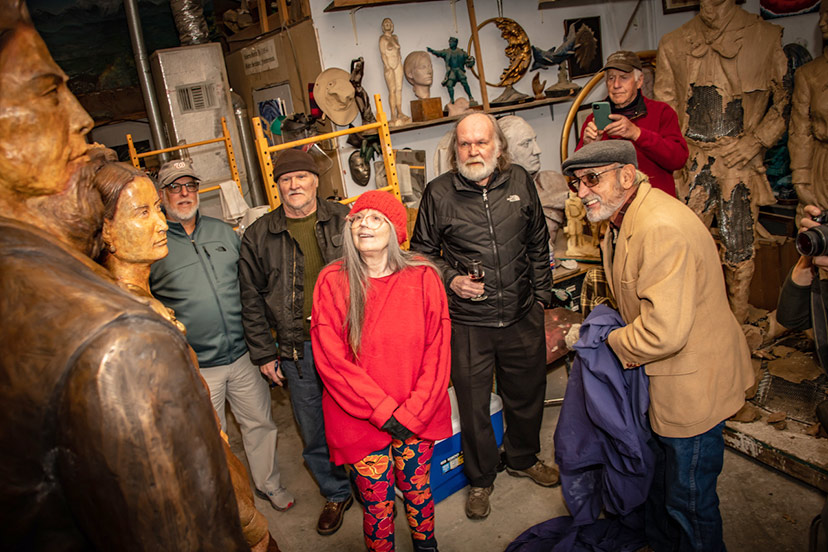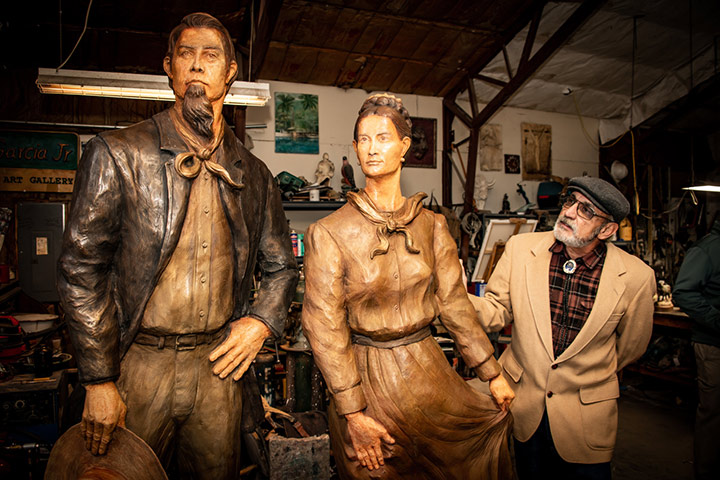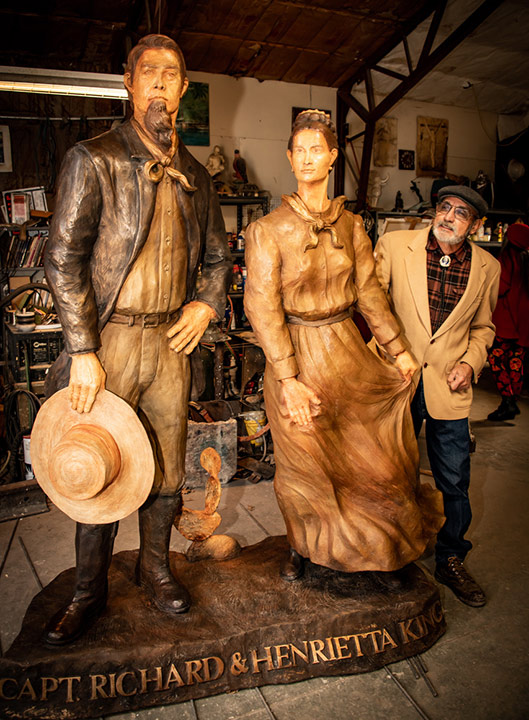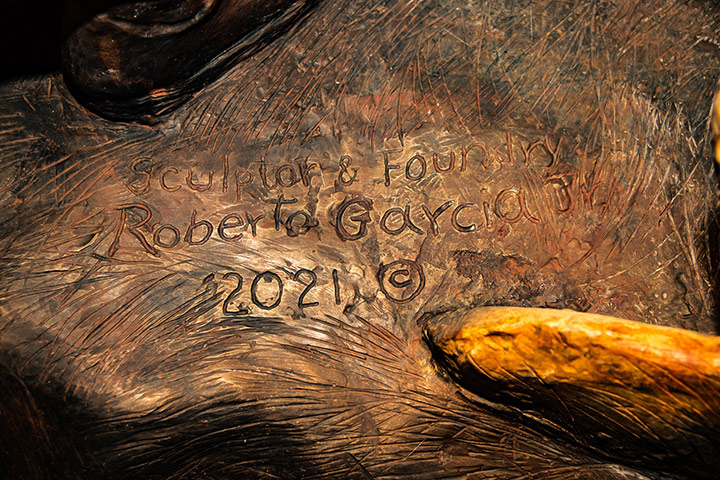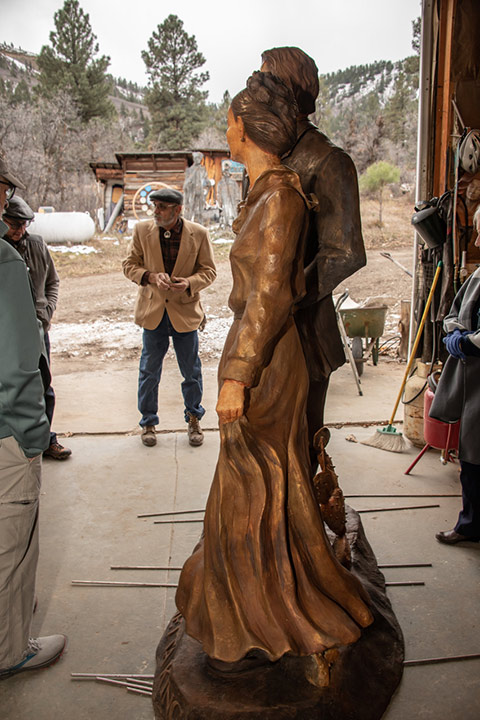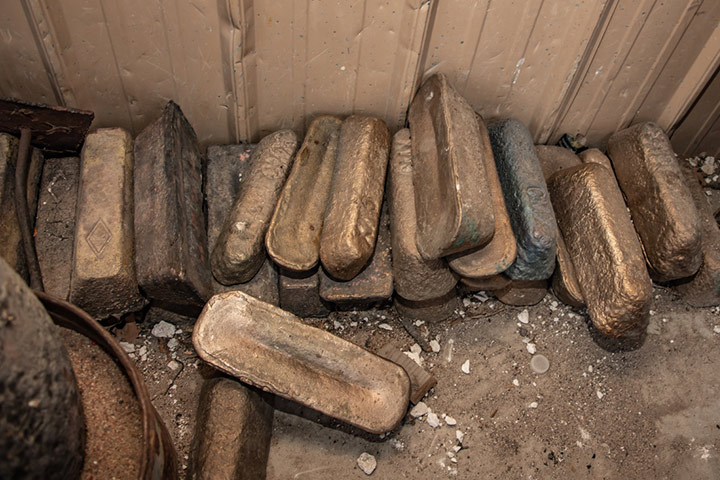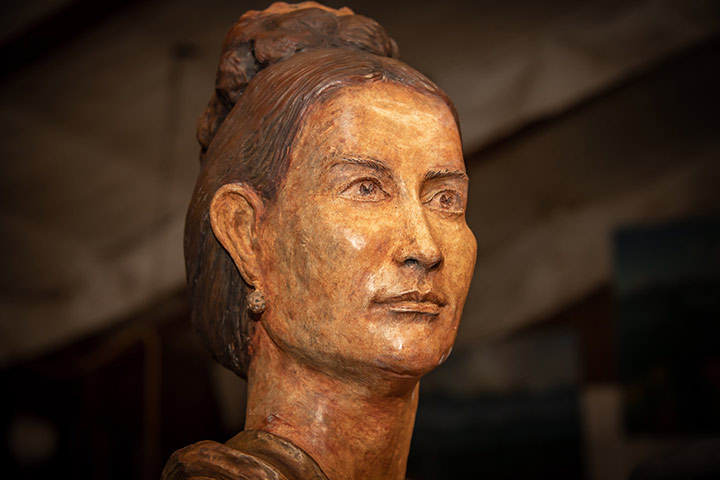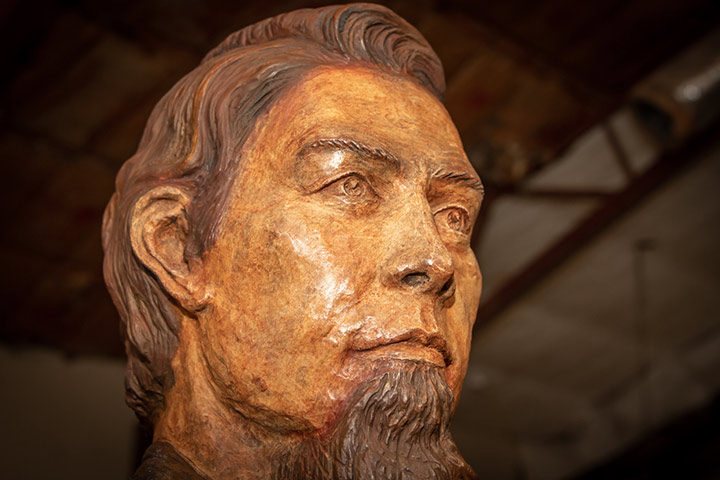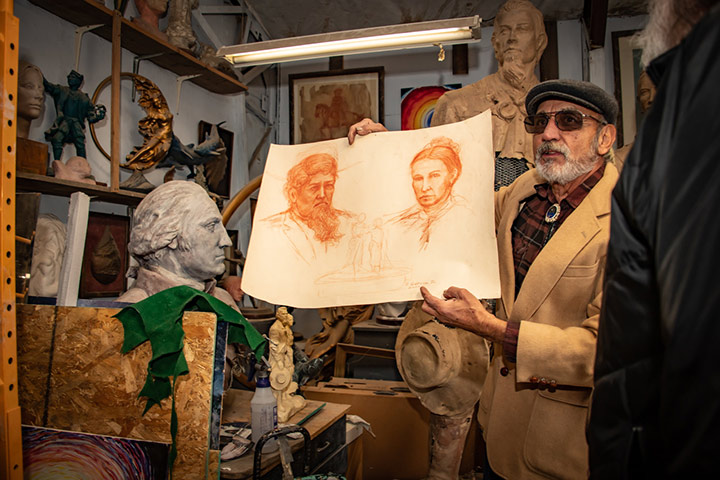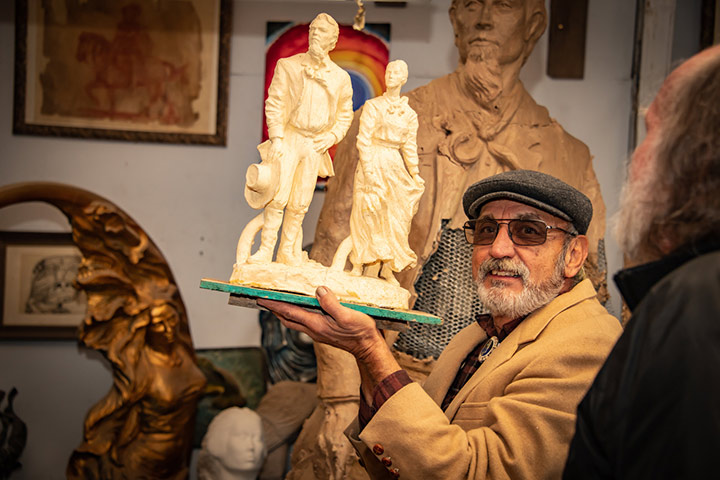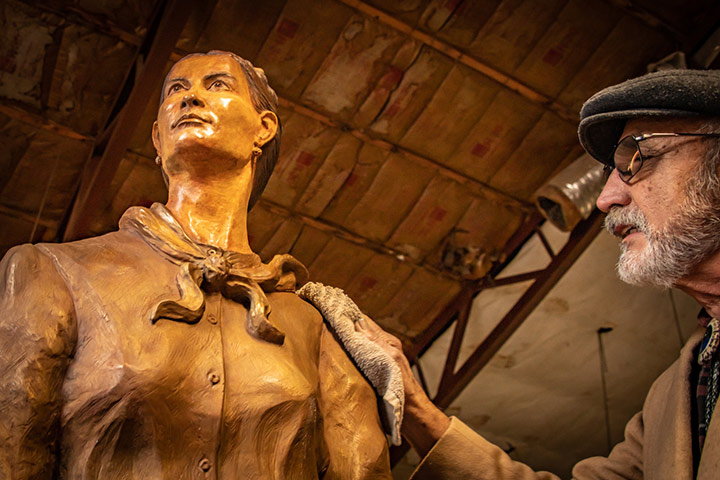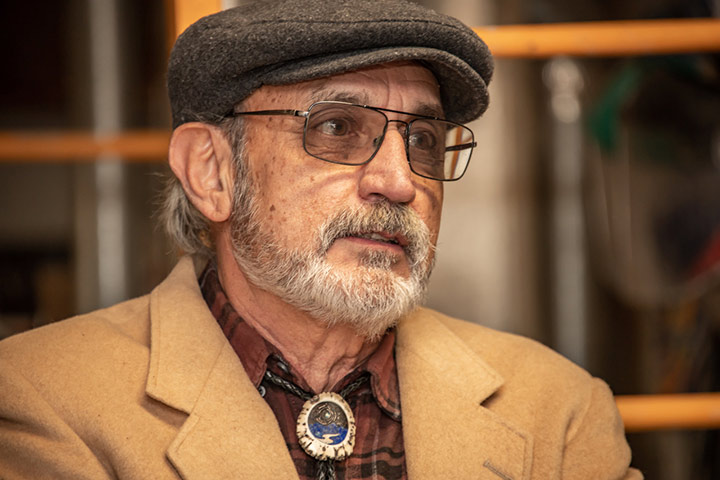Photos by Jeff Laydon, Pagosa Photography.
Sunday, November 13, 2022 was cold and crisp – a perfect afternoon to attend an artist reception high above Aspen Springs. The joyous event was the unveiling of Roberto Garcia’s latest bronze masterpiece at his awe-inspiring foundry.
On entering the massive foundry doors you are instantly transported to another age. The combination workshop/foundry is a mystical Renaissance realm in which Leonardo da Vinci himself would feel quite at home. Everywhere you look there’s something intriguing to catch the eye. The towering walls and packed shelves are adorned with sketches, paintings, molds, plaster forms and gigantic white gypsum heads of Washington, Columbus and proud conquistadors. Lovely casts of the female form are interspersed among scale models and other pieces of art, delicious memorabilia from a career that spans over forty years.
Throughout the crowded complex are tables containing some of Roberto’s smaller bronze statuary. Then there are the work benches displaying his arsenal of specialized tools, all essential to the intense labor of bronze casting. Leonardo would have used a great number of these tools in the 15th century… but would not recognize electric grinders and other power tools, not to mention the welding equipment and gas-fired crucibles.
A coterie of friends and admirers of the sculptor enjoyed wine and hors d’oeuvres while milling around, taking in the sights. Some notables in attendance were Barry Thomas, Tom Notto, DC and Jaye Duncan, Susan Martin and Bob Serra, Gregg Johnson, Les Faust, John Purins, and photographers Jeff Laydon and Bill Hudson… and other local luminaries. In the midst of this magical milieu stood a huge statue waiting patiently to be unveiled.
The artist approached the object of our great curiosity and asked everyone to gather around.
With out further adieu Roberto revealed his triumphant work of art. To our amazement, the great bronze was actually two enormous figures – a man and a woman of the 19th century. The proud, bearded man is seven feet tall and the whole piece weighs approximately 1,800 pounds.
For a moment we all stood silently allowing the impact of the stunning work to sink in; and then we gave the creator a well deserved ovation.
Roberto introduced us to Captain Richard King and his wife, Henrietta Chamberlain King, the founders of the vast King Ranch in Texas. Roberto had spent the last eighteen months of his life laboring over this incredible monument. He had captured a moment in time that occurred in the year 1854: the Kings surveying their newly acquired land, planning their ranch. The determination on their faces is evident and that same boldness is what eventually created the largest ranch in the United States. Today the King Ranch is 825,000 acres – 1,289 square miles – larger than the State of Rhode Island.
Richard King had been a riverboat captain on the Rio Grande during the Mexican American War. He was intelligent and headstrong, but his amazing wife Henrietta, aka “La Patrona,” a Presbyterian minister’s daughter, must have certainly kept him on the straight and narrow. The two had a daughter named Alice who eventually married Robert J. Kleberg, who was responsible for many innovations that gave the King ranch its reputation as “the birthplace of American ranching.” Today the Kleberg family still own and operate the historic cattle ranch.
Roberto expounded on the ancient process of cire perdue, now known as lost wax casting: making the molds in sections, the tricky pouring of 2,000-plus-degrees molten bronze, welding the pieces together, grinding, etc. – all extremely labor intensive. The pouring required Roberto to call on his two friends, David Singleton and Tim Bright of Arizona to assist him.
On this latest piece he decided to use four or five different patinas and the result is stunning. These particular patinas are hues of the primary color brown and bring the figures to life. (One has to see to believe!)
A small crowd followed him out the rear door to the actual foundry where the master caster described the process in detail. He showed us several bronze ingots; and to think that these bars could possibly turn into an 1,800-pound magnificent piece of art is almost incomprehensible. But for Roberto, it’s just another day at the office.
First sketched in 2001, the rendering of the “Capt. Richard and Henrietta King” statue was finally approved 20 years later by Roberto’s patrons Stephen “Tio” Kleberg and his lovely wife Janell, both in their mid-seventies. Eighty-year-old Cuban exile, Dr. Jose Ugarte ‒ Roberto’s dear friend, advocate and cheerleader ‒ was instrumental in getting the commission approved by the Klebergs.
The sculpture will reside in Kingsville, Texas near the King Ranch, between Corpus Christi and Brownsville. The good people of the town named after the Kings are preparing a spot on the grounds of the Kleberg County Courthouse. An elaborate pedestal worthy of such a fine memorial is being constructed on the south side. The statue will be erected in the spring of 2023.
A day after the unveiling Roberto and his friends, Barry Thomas, Gregg Johnson and Les Faust carefully loaded the cumbersome bronze work of art onto a brand new flatbed trailer using a two-ton hoist and a come-along. They laid the handsome couple down, strapped them to the wooden deck and covered them up. A few days later Roberto took off for Kingsville, one thousand miles from Pagosa Springs, Colorado. Luckily his son is following him and the two are stopping in Lubbock for the night.
This may be his last large scale bronze. If so, it is a truly remarkable piece to go out on.
Kudos to Roberto Garcia, Jr, a true Master!
DC has been a frustrated musician for over fifty years, and now has decided to become a frustrated writer. Learn more at DCDuncan.com. He’ll keep you posted.

